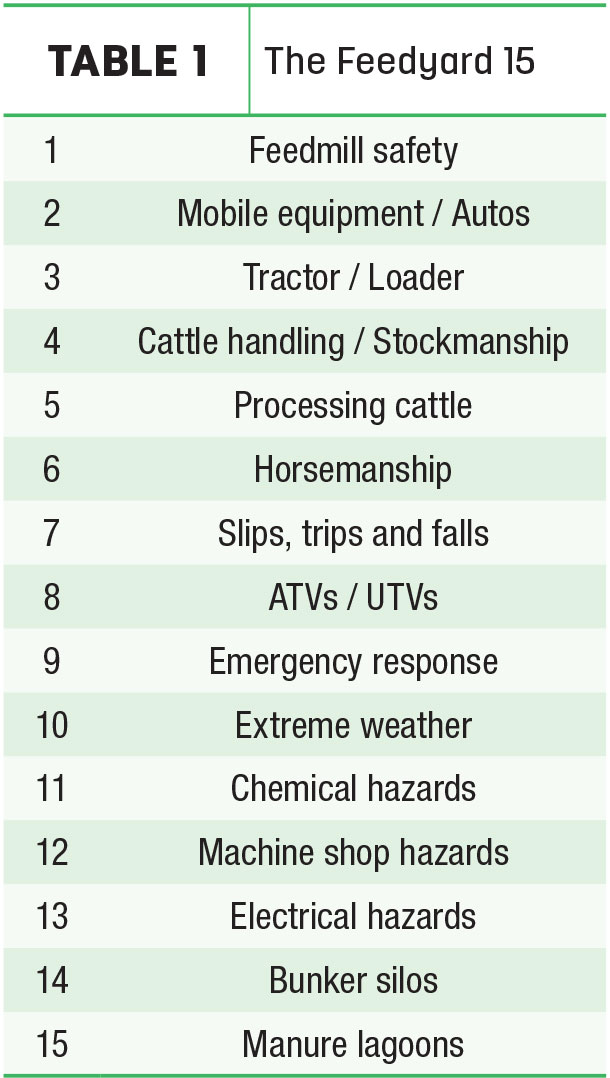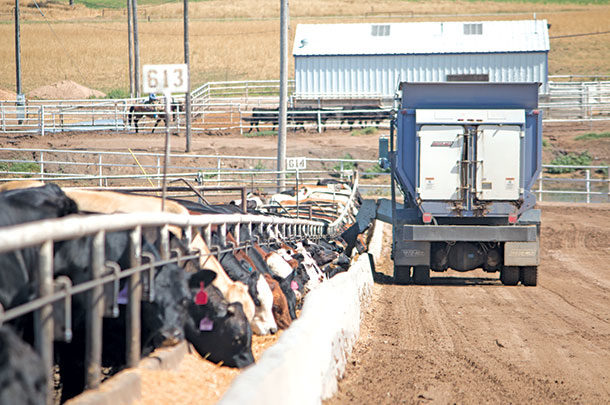This rate is four times higher than the ag, forestry and fishing sector, and 34 times higher than the rate of all other industries combined.
In a University of Nebraska – Lincoln Beef webinar this past November, associate professor Dr. Aaron Yoder spoke on efforts being made to improve the safety and health of feedlot workers, including a new project being developed to make materials and pieces of training accessible to feedyards across the country. Here are the five key takeaways from the most recent video of the Feedlot Webinar Series:
1. Representatives from across the cattle industry have come together to develop this program.
After numerous pilot projects to test the validity of the suggested program, it was decided to proceed with a four-year timeline to work on the safety issue at hand. In order to identify specific issues that needed to be targeted, the Feedyard Safety Roundtable was convened. This group was comprised of key stakeholders and experts from the cattle industry, including cattlemen, insurance companies and other industry professionals.
The key issues identified by this group include working with insurance companies to increase worker awareness of the cost of injury and illness, performing hazard analysis utilizing insurance data, collecting insurance data that could be summarized, and combining the efforts of feedyard and occupation safety with insurance.
2. The goals of the program do not stop at just injury and fatality reduction.
According to Yoder, “The ultimate goal is to reduce injuries and fatalities to the workers.” But the ambitions of this program do not stop here. Further, the program is designed to reduce the number of workers’ compensation claims filed by feedlots, which will reduce costs to producers. In accordance with previously stated goals, a “gold standard” of training materials about feedyard safety is being compiled. Lastly, the program strives to develop a sustainable commendation program for worker safety.
In order to achieve the established goals, three objectives have been set for the program. The first is to develop a training program for safety and health on cattle yards. To do so, ethnographic and qualitative data was compiled. Based on this data, materials will be implemented that can be used by anyone. The final objective is to evaluate the efficacy of the materials. This will be determined according to reductions in number of work days missed and number of workers’ compensation claims.
3. The program focuses on major concerns that have been voiced by producers.
With the aim of creating a program that fulfills the needs and wants of producers, an industry survey was distributed through Nebraska Cattlemen and Gallagher Insurance, both members of the roundtable. The survey, focusing on employee safety training, yielded results that showed hands-on training for employees is preferred by producers.
Producers voiced the areas of safety that have the greatest need for improvement are cattle handling and utilization of horses. It was also identified that slips, trips and falls are the most frequent cause of injury on feedlots. Further, a list of 15 topics for materials was determined based on data collected from the survey.
This list, or “The Feedyard 15,” were the top areas of concern according to producers (see Table 1).

The commendation program, which is one of the aforementioned goals, will be structured around the 15 topics. The goal of the commendation program is for yards to target a single topic each month for a year. At the conclusion of each of the topic’s training materials, both the yard and the employees would receive a certificate of completion. In turn, the new credentials should “help reduce the cost of insurance premiums as well as reducing workers’ compensation claims.”
4. Your feedyard can become involved with the program.
If you are interested in becoming involved in improving the safety on your feedlot, this program is available to you. Though training material is still in development, the first module, “Slips, Trips and Falls,” has been finalized. Two additional modules, “Horsemanship” and “Tractors,” are currently being developed and are on track to be finalized in March.
These modules are available, free of charge, to employers interested in participating in the program. For more information about the program, and to get involved, contact Yoder by email (Aaron Yoder).
5. This project is not the only resource available to increase safety on your feedlot.
While the project is still in development, material about the 15 topics, and many others, are also available via a variety of means. However, it is important to choose sources carefully, as not everything on the internet is true. In order to streamline your research and ensure your operation and employees are as safe as possible, Yoder compiled numerous reputable sources. Links to some of the sources mentioned in the webinar can be found below.
-
Central States Center for Agricultural Safety and Health from University of Nebraska College of Public Health
-
The National Institute for Occupational Safety and Health by the Centers for Disease Control and Prevention
-
National Ag Safety Database from the National Institute for Occupational Safety and Health
-
Ag Safety and Health from eXtension
-
Training Grants from the Occupational Safety & Health Administration
-
U.S. Agricultural Safety and Health Centers videos from the National Institute for Occupational Safety and Health
- Journal of Agricultural Safety and Health by the American Society of Agricultural and Biological Engineers

Madison Anderson is a recent graduate of Dordt College with a degree in agriculture.








